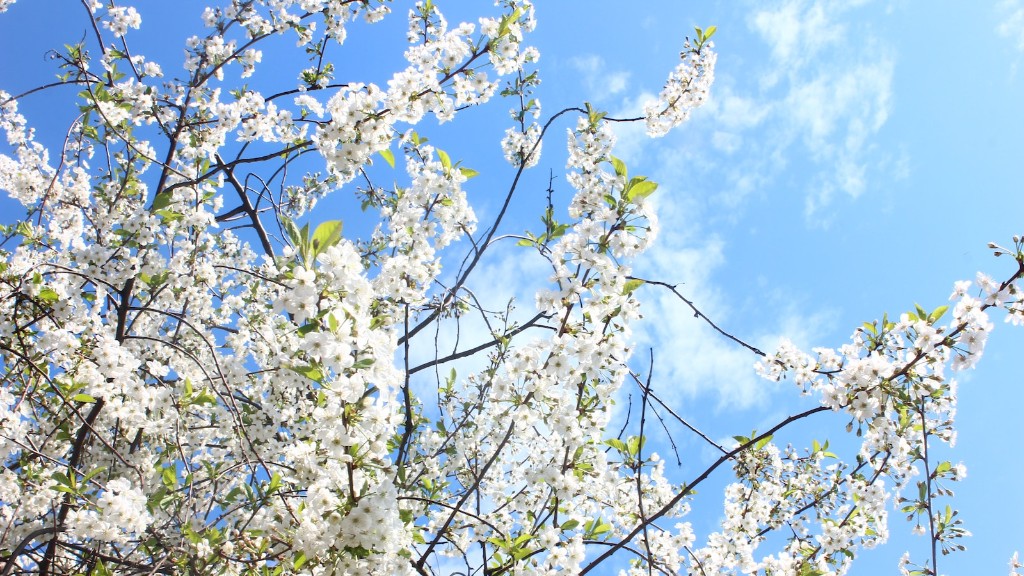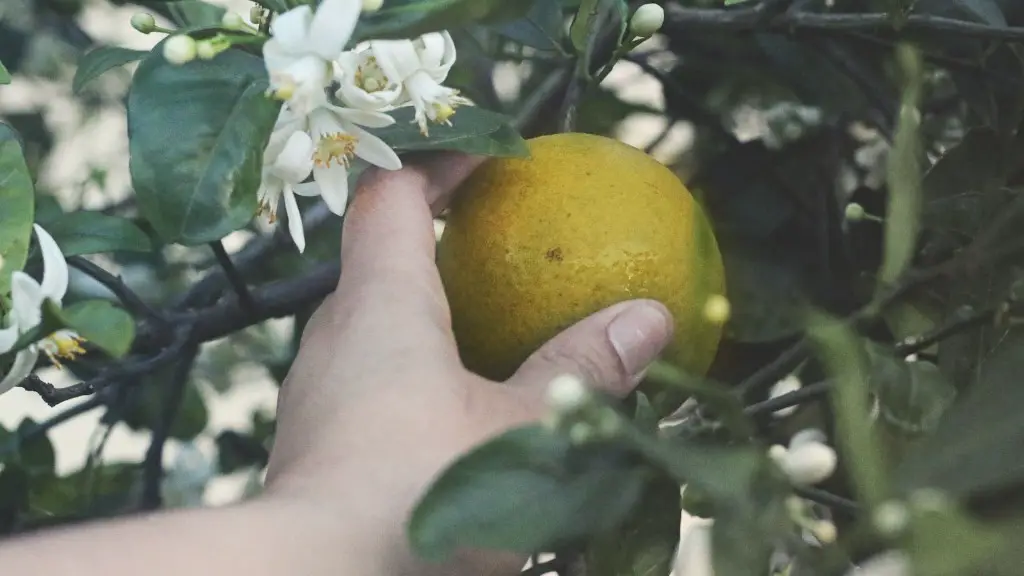Cherries are some of the most widely-loved and widely-grown fruits in the world. But, one of the main questions that comes up when planting a cherry tree is the size of pot it should be planted in. In this article, we will explore why choosing the correct size pot for cherry trees is an important step in making sure they survive and thrive.
When it comes to picking the size pot for cherries, the most important factor is the size of the tree. It’s best to start off as small as possible and work your way up. A pot that’s too small for a cherry tree may limit its growth and can cause it to become unhealthy. Generally, a pot that’s twice the size of the root ball should be adequate.
Soil Concerns
Another key consideration is the type of soil in the pot. Cherry trees generally need soil that is light and well-draining, as they don’t tolerate wet soils or heavy clay. If the soil is too compact, it can cause the roots to become water logged and lead to root disease and death of the tree. It’s important to make sure the soil you use is appropriate for the type of cherry tree you are planting.
Maintaining a Healthy Cherry Tree
The size of the container is also important to consider when it comes to ensuring the tree remains healthy. When plants are in containers, their roots can quickly become pot-bound, which can lead to plant stress and a decrease in the overall health of the tree. A good rule of thumb is to aim for a pot about the same size as the tree’s root ball. This allows the roots to be able to spread out and take up water, as well as access the food supply needed for growth and development.
For cherry trees, it is important for the pot to have drainage holes at the bottom in order to prevent the root system from becoming too wet. Water that is allowed to remain in the pot can cause the roots to become water-logged, which can lead to root rot and other issues. If the pot is not deep enough, it is also possible for the roots to dry out and reduce the tree’s growth.
Choose Quality Pots & Trays
When it comes to the quality of the container, it is important to choose a pot that will last. A pot made of plastic, such as a polyethylene one, is a good choice as it is lightweight, inexpensive, and durable. It is also possible to use a container made of clay or stone, but these can be much heavier and more expensive. Additionally, it is important to use a premium quality potting soil that is well draining and allows for good aeration of the root system.
When planting a cherry tree in a pot, it is important to use a tray to catch the excess water. This will prevent water from pooling in the bottom of the pot and prevents it from getting too wet. It is also important to remember to provide regular water to the tree so that the roots can stay healthy and the tree can remain vigorous.
Fertilizer & Mulch
When it comes to providing nutrients, fertilizer should be applied to the soil every few months in order to keep the tree healthy. Organic fertilizer is often a good choice, as this will provide the tree with additional nutrients and micro-organisms to support its growth. Additionally, adding a layer of mulch to the soil around the tree can help to retain moisture, regulate the soil temperature, and reduce weeds.
In addition, it is important to give the tree plenty of sunlight and make sure it is in a location that is sheltered from wind. Pruning can also be beneficial for improving the shape of the tree and allowing more light to reach the leaves. Finally, it’s a good idea to keep an eye on the tree for signs of pests or disease and take action if anything arises.
Re-potting
It is also important to remember to re-pot the cherry tree from time to time as it grows. This is important in order to provide the tree with more room for its roots, as well as to provide additional nutrients to the soil. Generally, it is best to re-pot the tree every two to three years, or when the roots start to become pot-bound. When re-potting, make sure to use fresh soil and choose a pot that is the right size for
thecherry tree.
Choosing the Right Potting Mix
When it comes to the right potting mix for cherry trees, it is important to choose a mix that is well-draining. A mix of organic matter, such as compost and peat moss, can help to keep the mix loose and prevent the roots from becoming too wet. It is also important to add some sand to the mix to improve aeration and drainage. Additionally, it is important to choose a soil that is not too high in nitrogen, as this can lead to an increase in foliage growth at the expense of fruit production.
Staking or Guiding the Tree
When planting a cherry tree in a container, it is important to make sure the tree is stable and secure. One way to do this is to use stakes or poles to guide and support the tree. This will help to keep the tree upright and allow it to grow properly. It is also important to make sure the container is large enough for the tree to grow without becoming root bound.
Frequent Watering
Another key factor for growing healthy cherry trees in containers is regular watering. The tree should be watered deeply and evenly every week during the growing season. The soil should be monitored to ensure it is moist but not waterlogged, and extra water may need to be added during periods of hot weather. It is also important to provide enough water during the dormant season to prevent the roots from drying out.
Managing Pests & Disease
When caring for cherry trees in pots, it is important to keep an eye out for pests or disease that may impact the health of the tree. Generally, an infestation of pests or disease will send the tree into decline and should be addressed quickly. The best way to protect trees from pests and disease is to keep the tree healthy and free of stress, and to inspect the tree regularly for any signs of infestation or disease.
July & August Pruning
When it comes to pruning cherry trees, it is generally best to prune during the months of July and August. This is when the tree is in active growth, and it is the perfect time to prune the tree in order to shape it and improve overall health. It is important that pruning is done carefully, as too much pruning could lead to stunted growth and fewer cherries produced.
Frost Protection
When growing cherry trees in containers, it is important to protect the tree from frost. This is especially true in colder climates, where temperatures can fluctuate significantly. The best way to protect the tree from frost is to position the container away from any drafts, and provide additional insulation if necessary. Additionally, a frost protection sheet can be draped over the container to reduce the impact of cold temperatures.



